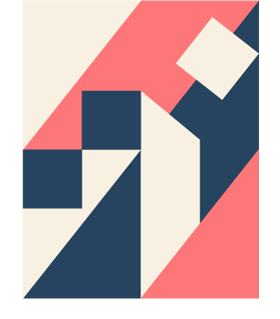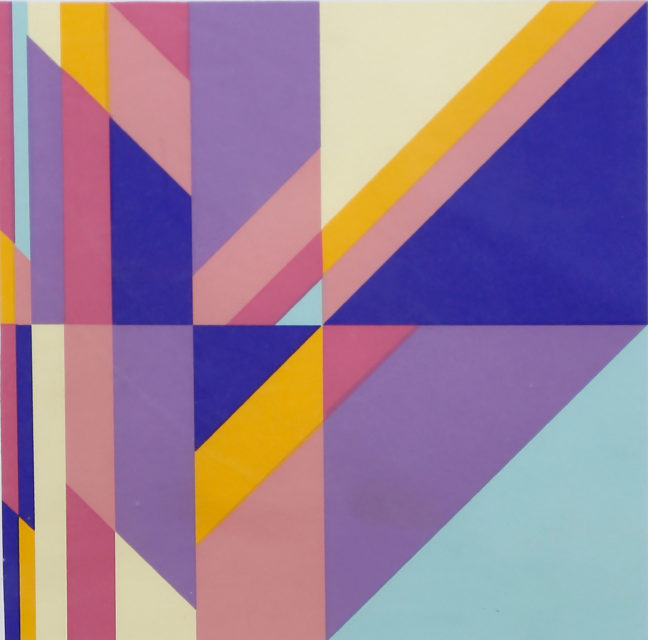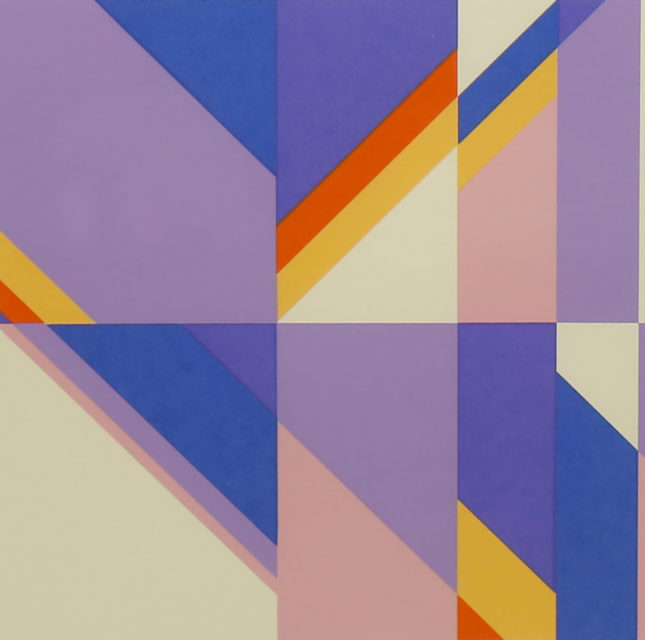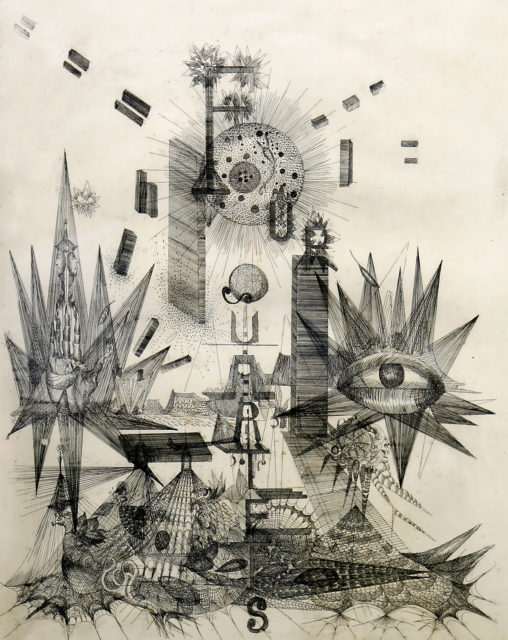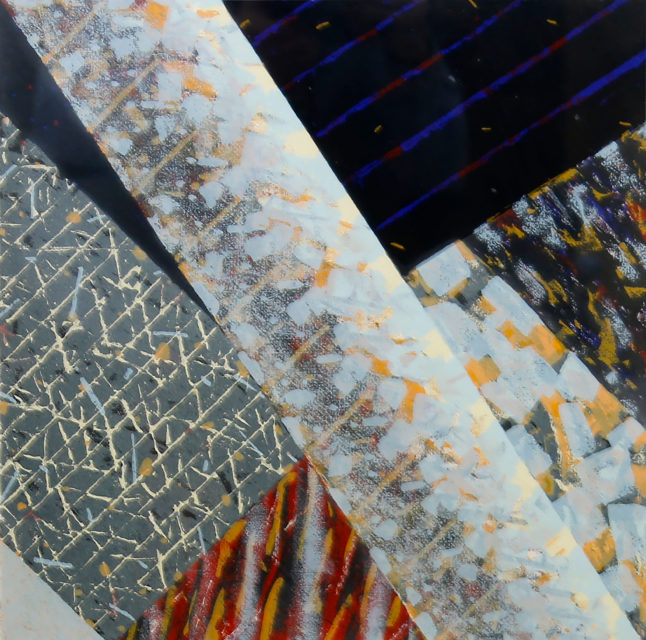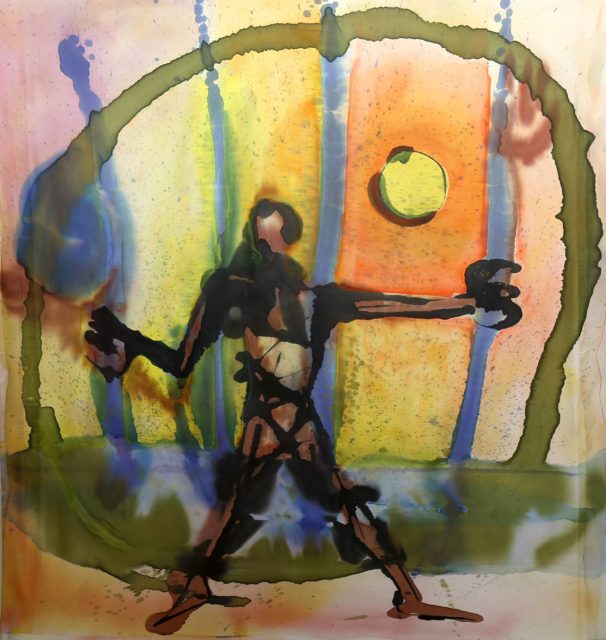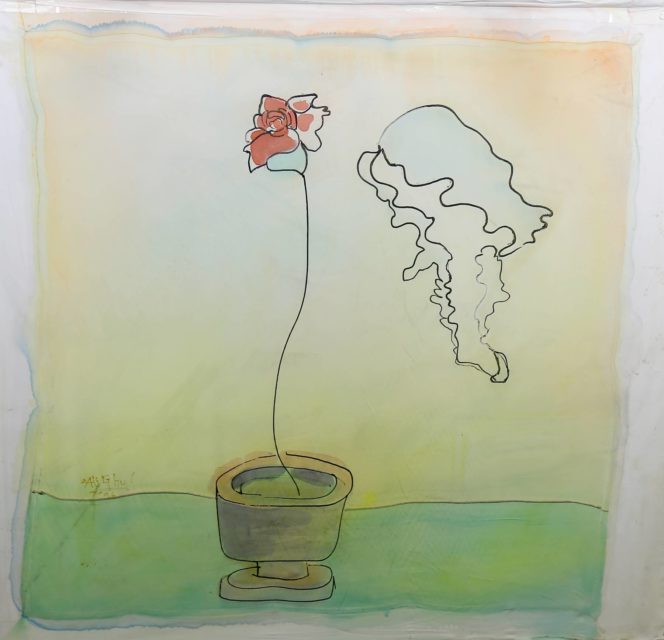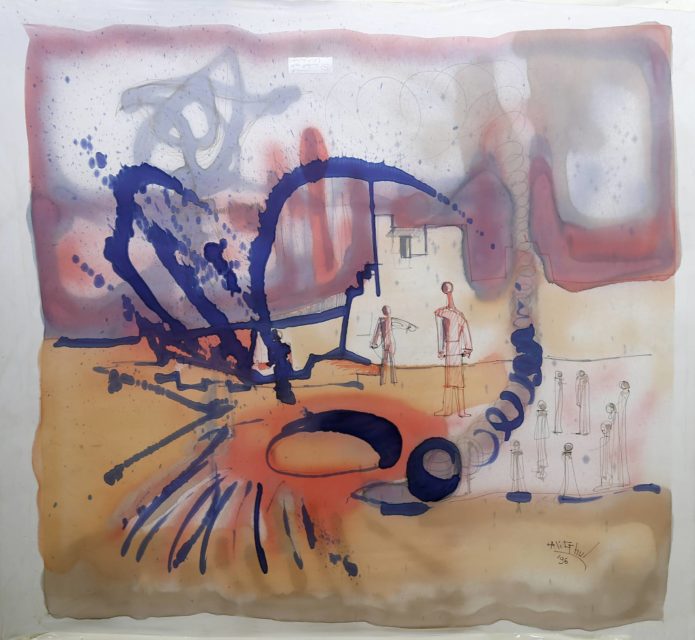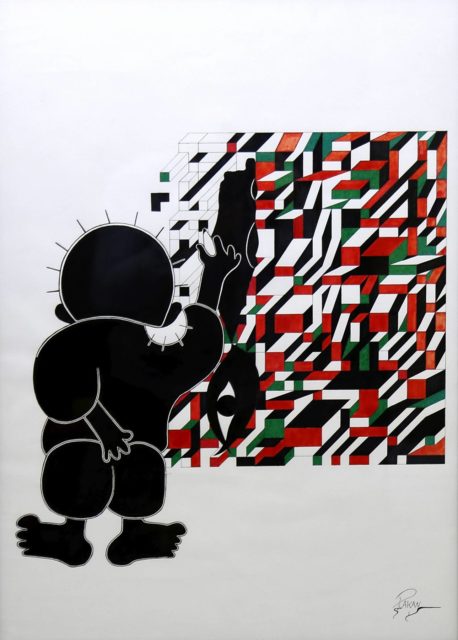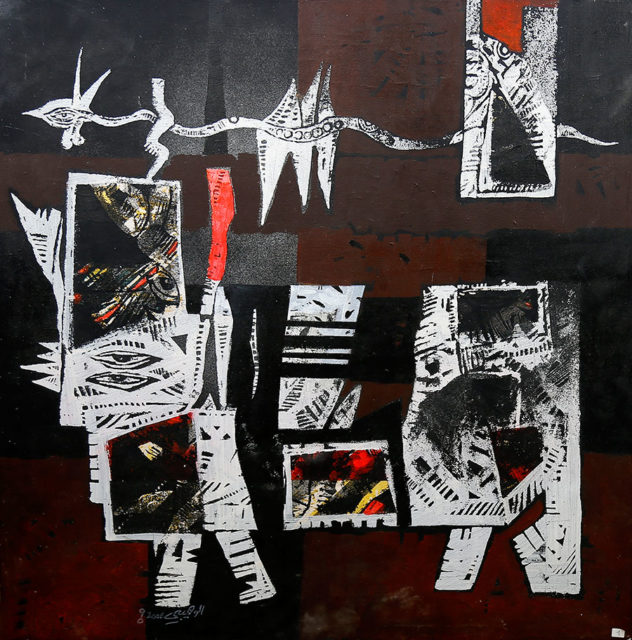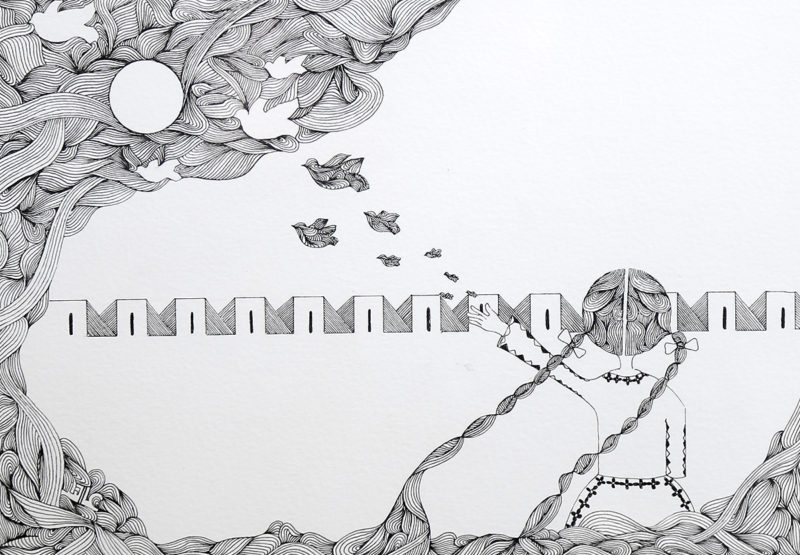-
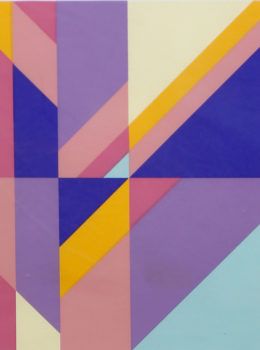
Third Quartet, Opus 3
1
Early in his career, Kamal Boullata developed a distinct style that embedded Arabic words and letters into colorful geometric designs that evoke his childhood in Jerusalem as well as his early training under the iconic painter Khalil Halabi. Referencing musical compositions, the lithograph “Third Quartet, Opus3" displays a bright patterning commonly found in his work and is part of a series with another work in the collection “Second Quartet, Opus3”.
-
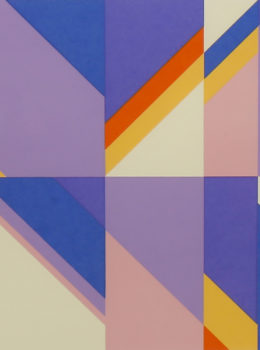
Second Quartet, Opus 3
2
Early in his career, Kamal Boullata developed a distinct style that embedded Arabic words and letters into colorful geometric designs that evoke his childhood in Jerusalem as well as his early training under the iconic painter Khalil Halabi. Referencing musical compositions, the lithograph “Second Quartet, Opus3” displays a bright patterning commonly found in his work and is part of a series with another work in the collection “Third Quartet, Opus3”.
-
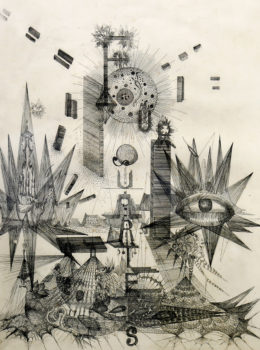
Pour TS Elliot
3
Known for creating dream-like worlds, surreal imaginary and landscapes, Juliana Seraphim developed her own visual language that was inspired from memories in her childhood.
In 1971, she was commissioned by Shorewood Publishers of New York to illustrate nine winners of the Nobel Prize for Literature on twenty-seven on copper plates. “Pour TS Elliot” is a rare Artist Proof of the limited edition whose imaginary and symbology could be referencing the Free Masons.
-
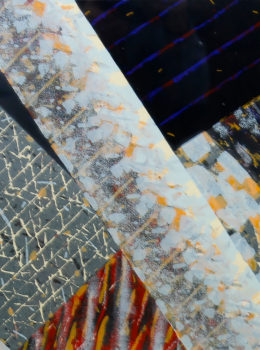
Position Delay
4
A forerunner of contemporary abstraction in the Arab world, Samia Halaby (Jerusalem, 1936) is a leading abstract painter and a prominent scholar. After receiving her Masters in Painting from Indiana University, she studied geometric abstraction in Islamic architecture around the Eastern Mediterranean. She is inspired by the concept of abstraction - the notion of reality being represented through form, as well as the various art abstraction movements. In the silkscreen work “Position Delay”, the title alludes to a possible problem being solved or philosophical question that the artist is asking herself which is left to the interpretation of the viewer.
-
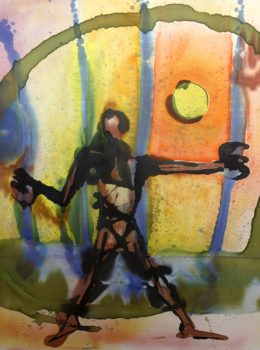
Untitled
5
Influenced by architectural drawings, Ali el-Ghul began experimenting with different inks and paints on silk. Skillfully bleeding the paints into each other, they form translucent layers. In “Untitled” the paint shapes the organic form of a figure in an abstract plane.
-
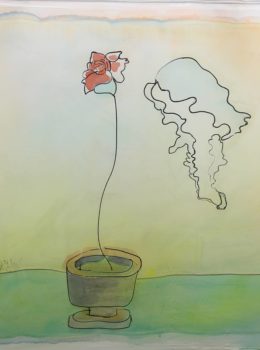
Untitled
6
Influenced by architectural drawings, Ali el-Ghul began experimenting with different inks and paints on silk. Skillfully bleeding the paints into each other, they form translucent layers in “Untitled”, the forms are then outlined, presenting a dream-like image of a ghost and a flower.
-
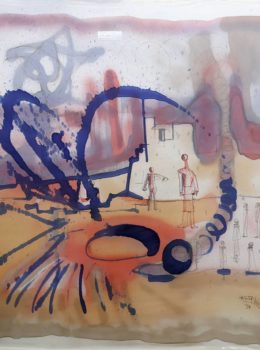
Untitled
7
Influenced by architectural drawings, Ali el-Ghul began experimenting with different inks and paints on silk. Skillfully bleeding the paints into each other, they form translucent layers that serve as compositional elements in “Untitled” in contrast to the defined figures in an architectural space.
-
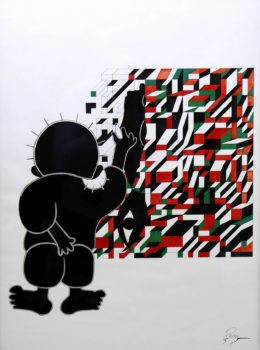
Homage to Naji al-Ali
8
Rakan Alyousif uses the image of Handala, an icon of Palestinian defiance, from the well-known Palestinian cartoonist and political critic, Naji al-Ali. The drawing emulates the original cartoon with the addition of graphic elements, possibly a map of Palestine, that Handala appears to be assembling together.
-
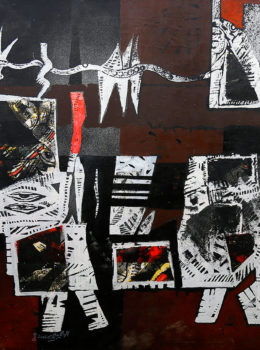
Untitled
9
Mohammad Al-Wahibi’s work is recognized thru his engraved strokes, symbology and limited use of color like in “Untitled.” In this work, he created small vignettes that are surrounded by eyes, snakes and patterning. As a child he painted on the asphalt road depicting exotic forms, birds, and talismans that are still seen in his latter work as a possible reverberation of his memory and Palestinian mythology.
-
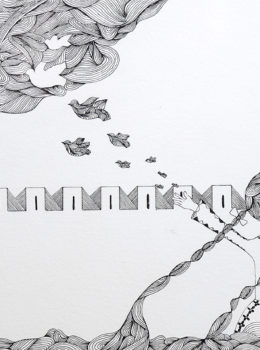
Gaza
10
Depicting the Palestinian plight, Ahed Izhiman works in both photography and illustration. In this symbolic illustration entitled “Gaza”, the detailed and intricately drawn lines show a young girl behind the apartheid wall releasing doves with her long hair swirling around the picture.
 1
1 2
2 3
3 4
4 5
5 6
6 7
7 8
8 9
9 10
10